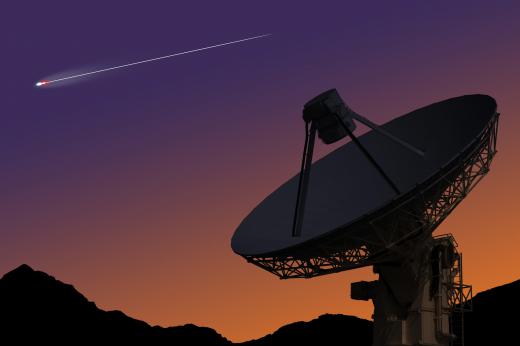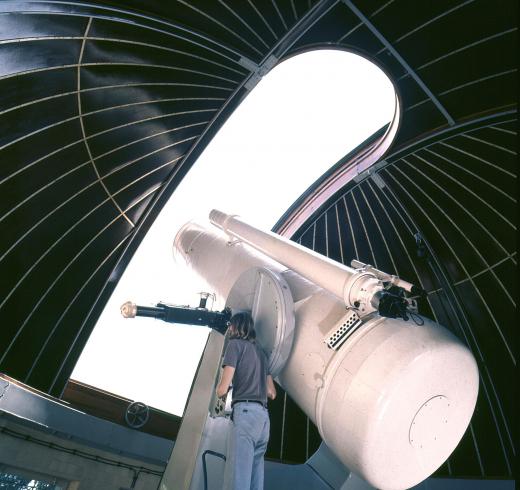What is a Supernova?
 Mary McMahon
Mary McMahon
A supernova is the catastrophic death of a star, characterized by a massive output of energy. In the Milky Way, supernovae are relatively rare, with a few notable incidences of historical supernovae recorded as far back as 185 CE. Many previous supernovae were probably topics of conversation and concern among the people who witnessed them. Around the universe, several hundred are observed and recorded each year, providing information about the formation of the universe and the objects within it.
There are two basic types of supernova, although each type is broken up into subtypes. In the case of a Type One, an instability arises in the chemical makeup of the star, leading to a thermonuclear explosion of formidable power. The core temperature of the star rises as a result of pressure and the imbalance, ultimately igniting the star in an explosion which can sometimes be visible with the naked eye from Earth.

A Type Two supernova involves the collapse of the core of a star, triggering a chemical reaction which causes the center of the star to essentially implode. The core of the star compresses into a neutron star, while the outer layers of the star are blown away into the surrounding space. A neutron star is an extremely dense star, all that remains of the compressed core of a star which has exploded in a Type Two supernova. Neutron stars have a number of unusual properties which make them highly intriguing for astronomers.

Astronomers study supernovae because they can provide valuable information about the universe. When stars explode, they initially form a cloud of plasma, creating a shock wave which leaves behind a distinct signature. The star also distributes heavy metals throughout the universe, and the large amount of energy behind a supernova can make it very easy to spot for an astronomer. By identifying and studying supernovae, astronomers can learn more about the size of the universe and the bodies in it. Supernovae created the materials which later came to become the Solar System, and a supernova will probably ultimately destroy our solar system as well.

Historically, the appearance of a supernova within the Milky Way has sparked discussion and debate. Supernovae helped early scientists to learn about the world around them, but also stimulated a general response among the populace. A supernova can last for weeks, and a close supernova would burn brighter than the sun. Many cultures feared that the appearance of a supernova signaled the end of the world, or the wrath of an angry God.
AS FEATURED ON:
AS FEATURED ON:













Discussion Comments
@burcidi: I do not believe a supernova would come close to earth the way you may think it might. A supernova, from what I believe, does not have the energy to reach earth.
We are learning about supernovae in class right now. Our instructor told us that if it weren't for supernovae, there would probably be no earth. Apparently, the heavy metals and other elements that are released into space after a supernova, then form the basis of new rocky planets that have the potential of life. I think if we go by that, it means that the Earth could have been formed following a supernova.
There might not have been many supernovas that we have witnessed from earth in the Milky Way. But I'm sure there must have been supernovae in the past and it will happen again in the future.
Some say that it's unlikely for a star so close to the earth to experience supernova to the extent that it would affect our atmosphere but others disagree. Some scientists even argue that a supernova might be responsible for the extinction of the dinosaurs and maybe even some of the ice ages in earth's history.
Because technically, if a supernova took place very close to the earth, it could destroy parts or even all of the ozone layer. The excessive ultraviolet light that's not being filtered by the ozone layer could cause organisms to die. The chemical changes could also cause the cooling of the earth.
The other scary part is that since it would take time for the light, energy and debris to reach the earth after an explosion, we would have no way of finding out about a supernova before or prepare in any way.
It was an intriguing program because even though the supernova took place a long time ago and millions of light years away, scientist were able to find evidence of it now. They even had images of the energy it left behind.
I think supernovae are really cool but frightening at the same time. Do you think if a supernova explosion took place very close to the earth, it could cause changes and damage in our atmosphere as well? Do we have any idea of what would happen if that were the case?
Post your comments